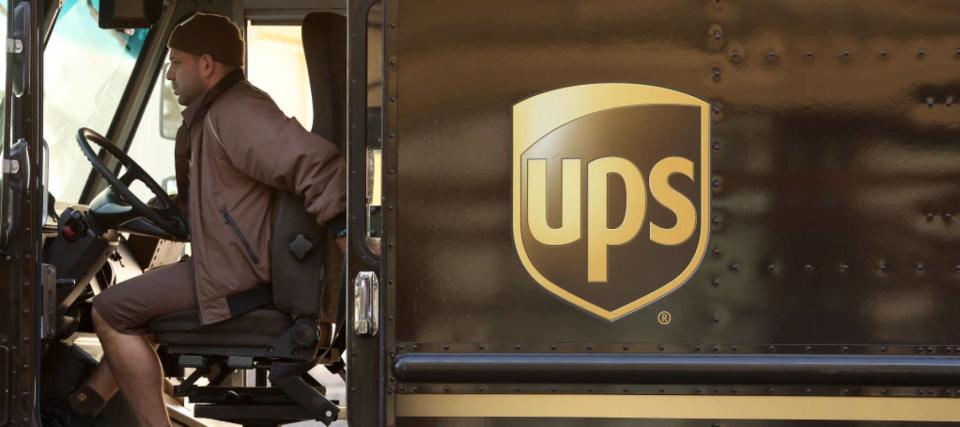‘Difficult and disappointing year’: UPS to lay off 12,000 employees — just six months after workers won a ‘lucrative’ new labor deal. What’s going on with the shipping giant?

UPS (UPS) employees are in the news once again — but this time, it’s not gone their way.
The shipping giant, which forecast weak demand for parcel delivery in 2024, has said it plans to lay off 12,000 employees to save $1 billion in costs. It’s also mulling a sale of its Coyote brokerage unit.
Don’t miss
Commercial real estate has topped the stock market for over 25 years — but only the elite had access. Now you can super-spike your wealth even if you're just an everyday investor
Inflation is still white-hot in 2024 — use these 3 'real assets’ to protect your wealth today, no matter what the US Fed does or says
Anything can happen in 2024. Try these 5 easy money hacks to help you make and save thousands of dollars in the new year (they will only take seconds)
This shocking announcement made on Tuesday comes just six months after unionized UPS workers landed a “lucrative” new labor deal, which will see delivery drivers earning an average of $170,000 in annual pay and benefits by the end of the five years.
“2023 was a unique, and quite candidly, difficult and disappointing year,” said UPS CEO Carol Tomé during the company’s earnings call. “We experienced declines in volume, revenue and operating profits and all three of our business segments.”
She attributed the weak performance to increased labor costs, challenges in the broader U.S. economy, freight complications abroad and the disruption tied to labor negotiations last summer that diverted business to rivals.
Here’s what’s really going on with the embattled shipping giant.
A drop in business
The mass layoffs mainly target management-level and contractor positions. They come after the shipping giant saw its revenue decline by 9.3% to $91 billion from $100.3 billion in 2022.
The company also issued a disappointing sales outlook for 2024, with projected global revenue of between $92 billion to $94.5 billion — about a billion dollars short of Wall Street analysts’ expectations.
UPS saw its domestic business drop by 7.4% in 2023. This was partly due to the disruption caused by the strike action threatened by the Teamsters union — which represents about 340,000 UPS workers — during heated contract negotiations last summer.
Read more: A Pennsylvania trio bought a $100K abandoned school and turned it into a 31-unit apartment — but here's a much simpler way to earn real estate riches without a mountain of red tape
The unionized workers eventually secured higher wages for full- and part-time UPS workers and workplace protections, like air conditioning in UPS trucks — but not before UPS customers, concerned about delays to their shipments, switched to rival carriers like FedEx.
During the earnings call, UPS CEO Tomé assured shareholders that the company has so far won back nearly 60% of the business it lost during those contract negotiations.
This directly contradicts the claim made by FedEx Chief Customer Officer Brie Carere in December that her company was "holding on to all of the share" it had taken from UPS.
‘A change in the way we work’
It wasn’t just the Teamsters saga that hurt the shipping company’s finances in 2023.
UPS reported an 8.3% decrease in its international business as well, mainly due to “softness in Europe,” as well as freight complications in the Red Sea region and the Panama and Suez Canals.
The company’s business surged to record levels in the early years of the pandemic as more people chose to shop online. But it has struggled to top that benchmark when consumers returned to in-person shopping and curbed their spending amid high inflation.
It tried to adapt by trimming employee headcount from 540,000 during the coronavirus peak to about 495,000 by the end of 2023, through attrition and reduced flying hours, rather than layoffs.
But, unfortunately for the UPS employees affected by the job cuts, leadership appears to have found new cost-saving ways to conduct business.
“It’s a change in the way we work,” said CFO Brian Newman. “As volume returns to the system, we don’t expect these jobs to come back. It’s changing the effective way that we operate.”
“We are going to fit our organization to our strategy and align our resources against what's wildly important,” said Tomé. “... we've identified new ways of working and are calling this Fit to Serve.”
UPS shares ended the day down over 8% and were flat in pre-market trading Wednesday.
What to read next
Robert Kiyosaki warns 401(k)s and IRAs will be 'toast' after the 'biggest crash in history' — protect yourself now with these shockproof assets
Jeff Bezos and Oprah Winfrey invest millions in this rare asset to keep their riches safe — How to ride their coattails even if you're not super rich
Millions of Americans drowning in debt as interest rates climb — use this free tool today to pay off your credit card fast and save thousands in interest
This article provides information only and should not be construed as advice. It is provided without warranty of any kind.
